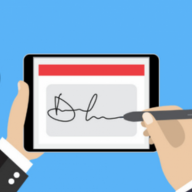3 red flags your business website needs a redesign

Digital & Technology
188 week ago — 9 min read
1 challenge
“My website is older than sliced bread. But I’m not sure if I need to redesign it.”
2 questions
“Are there are red flags I should look out for?”
“What actions should I take if I find them?”
3 watch-out signs
Slow Loading Speeds
Outdated Design
Outdated Content
Every modern business needs a website. Period.
Your website is – or should be – part of your company’s marketing strategy. Why?
Because your website is more than a piece of digital “real estate” in the ever-expanding cyber world. It is an asset that can make (or break) your company’s reputation. It can showcase your brand’s unique values, communicate its message, and elevate it above the crowd and noise…
…But only if it’s well-designed and meets the needs of those who matter most – your customers.
But what if your website is not well-designed? What if it’s clunky and difficult to navigate? What if it contains irrelevant information dating back to 1999? And what if it’s not secure?
Any of these issues can affect your company’s standing. It may turn off prospective customers or partners, set a poor tone for what kind of experience your stakeholders can expect from you, and give the impression that you just don’t care enough to put out useful information in a user-friendly manner. In the worst cases, your website may even inhibit your company’s growth.
So if your existing business website is not quite up to modern standards, you should consider redesigning it sooner rather than later. But when should you redesign your website?
Here are 3 “red flags” that indicate your website requires a refresh. If any one of these apply to your website, take action immediately. The effort will be worth it.
1. Slow loading speeds
No one likes a website that takes ages to load. It doesn’t matter if it looks stunning, is aesthetically pleasing, and is updated with the most relevant information. If it takes more than a few seconds to simply show up on a visitor’s device screen, they will become annoyed, and more often than not – leave. Even visitors that do stay on tend to spend less time on slow sites. In other words, their patience does run out eventually!
How fast should your website’s pages load? The vague answer is: the faster, the better. For a more specific answer, read on.
According to a 2019 page speed report by Unbounce, the average web page loads in 15 seconds on mobile devices. While this may not seem like a lot in chronological terms (it’s just 1/4 of a minute after all), in terms of impatient customers, it is a lot. Why? Because the same report also found that more than half of site visitors leave a page if they have to wait longer than 3 seconds. 3 seconds is just 1/20 of a minute! So, you should aim for a website where every page loads in 3 seconds or less. Customer expectations on loading speeds may vary by industry and company, but in general, loading speeds under 5 seconds should be your goal.
Faster sites improve user experiences and encourage them to stay on for longer. Another way of saying this is that your bounce rate – the phenomenon where people leave your website and go back to search results – will be low. If you were wondering, low bounce rates is a good thing for your site. Slow pages also lower conversion rates. This can be an especially worrying problem if your site is set up for eCommerce sales.
Actions to take:
- Check your site loading speed with free tools like Pingdom or GTmetrix
- Analyse if issues are user-based or website-based. You have no control over user-based issues so you can ignore them
- For website-based loading issues, check if they are due to:
- Technical issues: Poor-quality coding, large file sizes, etc.
- Poor design
- Server-side issues: Limited Internet bandwidth provided by your hosting package
- Optimise your images, links and content
- Avoid excessive redirects
- Make your entire website (or at least most pages) cacheable
- Also remember to optimise your loading speeds for all devices, including mobile. Considering that about 90% of the global internet population uses a mobile device to go online, a fast-loading mobile-optimized website is critical for your business.
2. Outdated Design
Your site’s visual appeal and look-and-feel contribute to visitors’ first impressions of your brand. Within just a few seconds (more if your site loads slowly – see above!), your users make quick assumptions about your business. If your site design is outdated and looks neglected, visitors may think that:
- You don’t care about what they really want
- You neglect other areas of your business as much as you neglect your website
- The quality of your offerings is questionable
- You don’t have credibility in your industry
- Your company is behind the times and therefore not qualified to meet their needs
- Some visitors may even think that a website that has not been updated in 5+ years is either out of business, or is on its way out.
Your old, outdated website will not rank well in Google’s search results. And if your website is not findable, you will lose business. So if your website still features a design from 2006, it’s time for an overhaul.
Red flags indicating an outdated website:
- Uses Flash
- Gaudy backgrounds, blinking text and cluttered structure
- Auto-play videos
- Misaligned, pixelated or blurry images and/or excessive image borders
- Missing or outdated logo
- Small or hard-to-read fonts, too many font colors, inconsistent font types
- Too many stock photos
- Old or broken links
Actions to take
- Understand modern web design best practices and figure out which ones apply to you
- Get a good website designer and developer to redesign (or at least refresh) your website
- Pay attention to both User Interface (UI) and User Experience (UX)
- Invest in good design tools and assets such as photographs, vector images, fonts, etc.
3. Outdated Content
While it’s true that visitors may leave your website if it loads slowly or features an outdated design; it’s also true that they will stay if it offers useful, relevant and up-to-date content.
Have you heard the saying, “Content is King?” This is as true of websites as it is of social media, articles or guest blogs. Content informs, educates, advocates and inspires. It communicates your website’s – and therefore your company’s – purpose. It may also explain a service or sell a product. What do you want your website to do? And does your content help you do it? If no, you need to refresh your content as soon as possible.
Review your website and see if it currently has any of these issues:
- Excessive keyword stuffing
- Long paragraphs of text with no clear message or take-away
- Low word count on key pages
- Incorrect information, e.g. address or phone numbers
- Missing or incorrect information about the company or its offerings
- Old or neglected blog
- Outdated news section
Actions to take
- Hire a professional website copywriter to create content that’s aligned with your website’s purpose and company’s business objectives
- Create a keyword strategy and implement Search Engine Optimization (SEO) to make it findable
- Implement Calls to Action wherever possible (but don’t overdo it!)
- Do a regular website audit to update or remove outdated pages
- Include a blog section
- Offer free resources (e.g. whitepapers, reports, infographics, etc.) to entice and engage with site visitors
- Include internal links hyperlinked to other relevant pages on the site
- Most importantly, your website content should appeal to site visitors and give them what they want, whether it’s information, guidance or inspiration. Remember that it should always answer the question that every site visitor wants to know: What’s In It For Me (WIIFM)?
Do I really need to redesign my website?
Now you know the three key factors to look out for, you can analyze whether your website needs a redesign. If you’re worried about the investment, keep in mind that a small outlay of cash to redesign your website now can have a huge impact on your earnings and profits later. In fact, a good website is so powerful that most companies that invest in redesigning their existing website usually recoup their investment very, very quickly.
Also read: 5 easy steps to increase your blog or website rank
To explore business opportunities, link with me by clicking on the 'Connect' button on my eBiz Card.
Image source: shutterstock.com
Disclaimer: The views and opinions expressed in this article are those of the author and do not necessarily reflect the views, official policy or position of GlobalLinker.
Posted by
Lion Amir ViraniTech Evangelist| Thought Leader | Social Entrepreneur | Enthusiastic Networker | Speaker| Startup Mentor
View Lion Amir 's profile
Most read this week
Trending













Comments
Share this content
Please login or Register to join the discussion